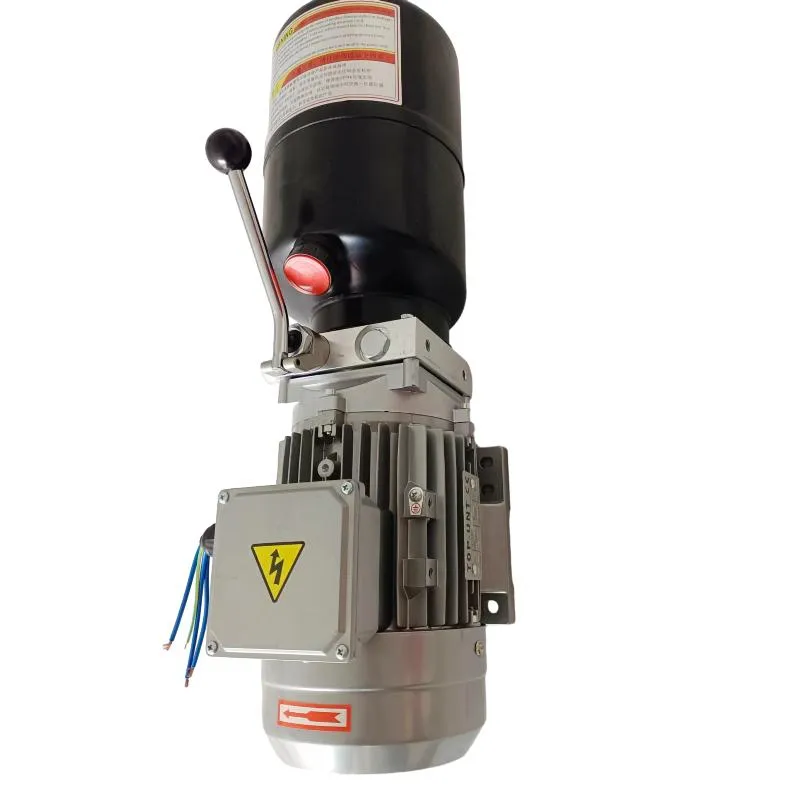Oct . 21, 2024 06:26 Back to list
Seals for Hydraulic Cylinders Enhancing Performance and Reliability in Fluid Power Systems
The Importance of Seals in Hydraulic Cylinders
Hydraulic cylinders are crucial components in various machinery, enabling efficient power transmission and force generation in industries ranging from construction to manufacturing. At the heart of their operation lie seals, which play an essential role in maintaining the performance, efficiency, and longevity of hydraulic systems. This article delves into the significance of seals in hydraulic cylinders, exploring their types, functions, and maintenance aspects.
Understanding Seals in Hydraulic Cylinders
Seals are devices designed to prevent the escape of hydraulic fluid and to protect the internal components of the hydraulic cylinder from contamination. They are critical in ensuring that the energy transmitted through the hydraulic fluid is harnessed effectively. A well-functioning seal contributes to the overall operational effectiveness of the hydraulic system, while a faulty seal can lead to leaks, reduced efficiency, and increased wear on components.
Types of Seals
There are several types of seals used in hydraulic cylinders, each with its own specific application and advantages
1. Static Seals These seals are used in areas of the hydraulic cylinder where there is no relative motion between the sealing surfaces. They help in preventing leaks at joint interfaces and are commonly made of materials such as rubber, polyurethane, or PTFE.
2. Dynamic Seals In contrast, dynamic seals operate in areas where there is constant motion. These seals are designed to withstand movement while maintaining a tight seal against the hydraulic fluid. Popular materials for dynamic seals include Nitrile rubber (NBR), Viton, and various composite materials offering high durability and resistance to wear.
3. Rod Seals Specifically designed for sealing the rod of a hydraulic cylinder, these seals prevent hydraulic fluid from leaking past the rod as it extends and retracts. Rod seals must be engineered to handle high pressures and varying temperatures, making their material selection crucial.
4. Piston Seals These seals fit between the piston and the cylinder walls. They ensure that the hydraulic pressure is maintained to generate the necessary force for movement. Piston seals are often subjected to intense wear and require materials capable of withstanding high stresses.
Functions of Seals
seals in hydraulic cylinder product

The primary functions of seals in hydraulic cylinders include
- Preventing Leaks Seals ensure that hydraulic fluid remains confined within the cylinder, preventing leaks that could lead to inefficiencies and environmental hazards. - Contamination Control Seals help keep contaminants like dirt, dust, and moisture out of the hydraulic system, which could damage sensitive internal components.
- Pressure Maintenance By containing the hydraulic fluid, seals maintain pressure within the cylinder, ensuring that machinery functions optimally.
Maintenance and Care
Regular maintenance of seals is vital to ensure the longevity and performance of hydraulic cylinders. Here are some best practices
- Routine Inspections Regularly check seals for signs of wear, hardening, or cracking. Early detection can prevent costly repairs down the line.
- Proper Installation Ensure seals are installed correctly to avoid any misalignment that could lead to premature failure.
- Quality Materials Use high-quality seals that are suitable for the specific operating conditions of the hydraulic system, considering factors like temperature, pressure, and fluid compatibility.
Conclusion
Seals are indispensable components of hydraulic cylinders, influencing the functionality, efficiency, and lifespan of hydraulic systems. As industries increasingly rely on hydraulic technology for performance and productivity, understanding the role of seals, their types, functions, and maintenance practices is essential. By prioritizing seal integrity and performance, businesses can ensure the optimal operation of their hydraulic machinery, minimizing downtime and maximizing profitability. Whether dealing with static or dynamic applications, investing in quality seals is a strategic move for any organization seeking reliability and efficiency in hydraulic operations.
-
Fork Lift Power Units - Hebei Shenghan | Efficiency, Reliability
NewsJul.13,2025
-
1.5-Ton Turbocharged Cylinder-Hebei Shenghan|Hydraulic Solution,Energy Efficiency
NewsJul.13,2025
-
Auto Hoist Power Units-Hebei Shenghan|Efficiency&Industrial Lifting
NewsJul.13,2025
-
Double Acting Power Units-Hebei Shenghan|Hydraulic Solutions,Industrial Efficiency
NewsJul.13,2025
-
1.5 Ton Lifting Cylinder 70/82-40-290-535 - High-Performance Hydraulic Solution | Hebei Shenghan
NewsJul.13,2025
-
Fork Lift Power Units - Hebei Shenghan | Efficiency&Reliability
NewsJul.13,2025
